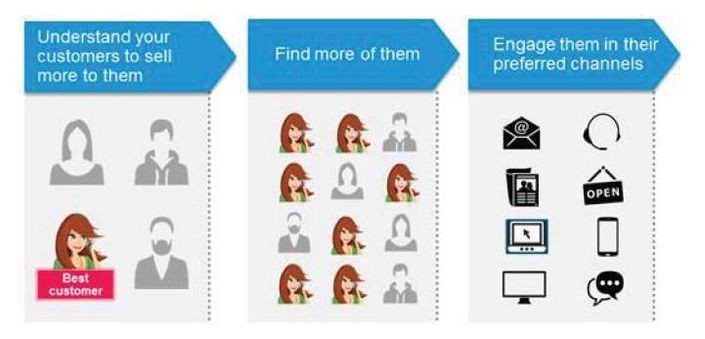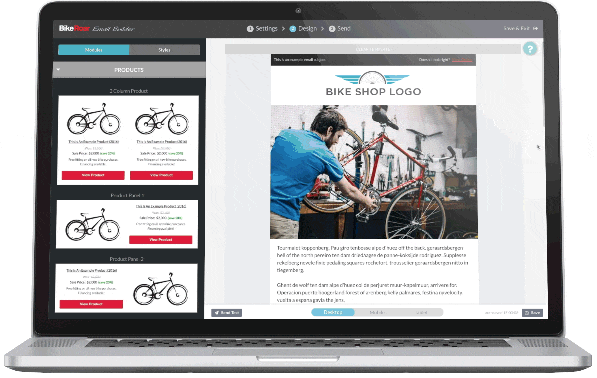You know all that talk about ‘Big Data,’ ‘cookies,’ ‘re-targeting,’ ‘predictive technologies,’ and other such Orwellian techno-jumbo? It’s like diversified investment portfolios, electricity storage technology, and 40-30-30 diet regimes; you’re sure it’d be good for you, but it’s all a bit above your head, and gee, it’s not like you haven’t already got enough on your plate to manage as a retailer. I totally hear you.
When it gets down to brass tacks, though, most of these big and spooky technologies are about achieving two holy grails of sales and marketing: Customer Profiling & Personalized Messaging (i.e. targeted sales).
I’ll come back to ‘what, why, and how’ in a bit.
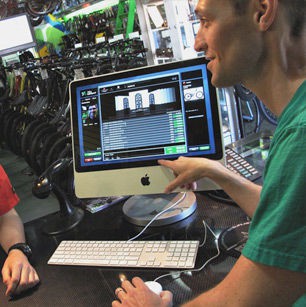
But. Firstly, I assume you’ve got some sort of Retail Management System (RMS) software on your shop computer, on which you manage your daily inventory, transactions, job tasking, accounts, and customer records. I’m also going to assume that you’re dabbling in some form of social media and EDM (‘electronic direct mail’) customer communication and marketing.
And. I’m also going to assume that you maintain a reasonably robust, complete, and up-to-date Customer Records Management (CRM).
If you don’t, or what you do have is a dog’s breakfast, STOP READING THIS ARTICLE RIGHT NOW! Because the rest of it will be pointless and unusable until you get this critical aspect of your data management in place and up to speed. Get your CRM up to date with at least a hundred fully populated and active customer record profiles before you then return to reading the rest of this article.

TIP:
Your RMS software will typically have a basic CRM tab or component already built into it. Use it. Today. Tomorrow. And every day going forward. It is no longer an optional extra or something to ignore because you’re too busy. And if you’re really serious about your business’s success going forward, also consider investing in a subscription to a dedicated CRM software package, (often also referred to as a SaaS or ‘Software as a Service’) e.g. SalesForce, Oracle, InfusionSoft, Zoho etc.
Customer Profiling
Customer profiling is essentially the task of creating a collated, defined image and makeup of your customer base (as well as the customer types you don’t have), and then further defining your base into a handful of typical ‘avatars’ (graphically depicted personas) or categories.
At a simple level, you would look at demographic data such as age, gender, postcode and occupation. For a more sophisticated profile, you would identify and include psychographic information such as personality types, personal preferences etc.
For the purposes of bicycle retail, there are numerous other markers you might wish to record; type of bikes, brands, values of bikes owned, club/bunch affiliations, indicated future purchases, etc.
Why bother? In a nutshell, customer profiling allows you to best target your communications, content, new product info and sales promotions, so that you enhance the likelihood your message will be better received and more likely acted upon. On the flip side, it equally means you’re much less likely to annoy your customers with inbox filler, disengaging social media posts, or wasted re-targeting ads.
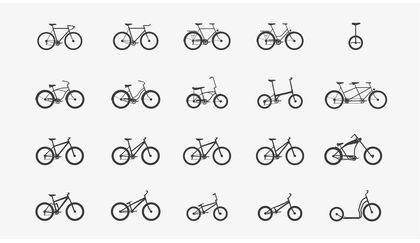
You might have just received a new range of premium, Italian road bikes into the store. Thanks to the profiling data in your CRM, you’re able to target the 30-60-something, road riding, professionals and high spend individuals, with tailored messaging, imagery, language, and offers more likely to gain attention and sales response. The 55 year old woman who bought the $4000 e-bike from you last spring won’t have been excited by the news of the new road bike arrivals. She will, however, be thrilled to receive the invite to the test day of new e-bikes from your bike suppliers. As a result, she didn’t reclassify your emails as ‘spam’ — she didn’t dent your Facebook engagement rating by not clicking liking, reading, sharing or responding, and she didn’t waste your re-targeted Google advertising spend by not clicking on the ad.
Personalized Messaging
Most commonly, this simply involves using a customer’s name in the message or image, but could also be something more subtle, such as a known product preference or interest, the mentioning of the suburb they live in, the club they ride for, or a free coffee voucher from their favorite local café.
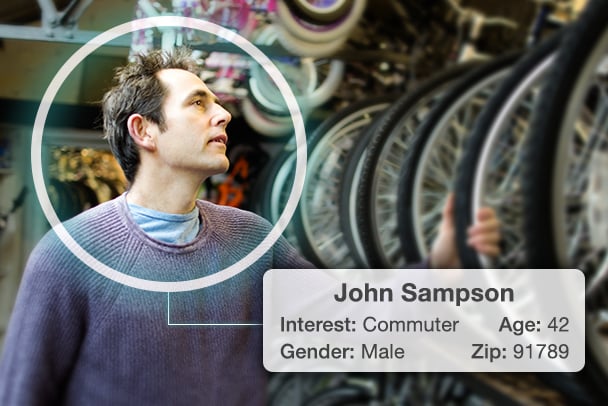
What’s the point? The point is, at the end of the day, we are selling and communicating to human beings — sentient beasts which seek out and respond to identification, acknowledgement, trust, personal relationship and connection. Personalized messaging plays on and to the fact we are human. Personalized messages will always garner more interest, engagement, and response.
I won’t quote a number here in terms of percentages. Basically because the uplift percentages quoted by all the various major digital marketing players vary quite wildly. What I can say with some confidence though is that the uplift numbers are significant. To the extent that your business is seriously missing out if it doesn’t utilize personalized messaging. Whilst none of the reputable marketers with vast amounts of hard, longitudinal data can agree on numbers; we’re not talking about 5-10% improvement in response. We’re talking about minimum 30% and as high as 80% uplift. That’s numbers even the most hardened Luddite can appreciate.
The uptake?
So, on the back of a well maintained, fully populated and regularly ‘cleaned’ CRM database, creating Customer Profiles and using Personalized Messages will bring improve the following aspects of your bike business:
- Customer Retention
- Customer Acquisition
- Customer Lifetime Value
- EDM Response Rates (most key data points)
- Social Media Engagement
- Sales Promotion Response
- Site Visits
- Footfall Counts
- Reputational Uplift
This Sounds Expensive and/or Complicated to Achieve
Truth is, you can (and companies do) spend an awful lot of money on software and expertise related to customer profiling, customer targeting and personalized messaging. There are some scary-clever CMS, Predicative Analytics, Segmentation and Personalization software currently available, which can aggregate data from social media activity, search engine data, spending behaviour, demographic info, geo-mapping and predicative/intuitive technologies; allowing suitably resourced companies and brands to almost know you better than you do. Software which can pretty much predict what you’re going to buy, or be willing to buy next (with a little nudge). Like I said. Scary clever.
Not Necessarily So
But, for the typical bike shop, that sort of investment is a tad over the top, if not tenable or affordable either. There are thankfully much simpler, more user friendly and affordable tools at your disposal. A quick Google search will provide you pages of email management software programs you can subscribe to, with varying levels of reliability, ease of use and price. Common examples are Mailchimp, Campaign Monitor, Active Campaign, Marketing 360, Hubspot, Pardot and too many others to mention. And even better still, there is now BikeRoar's bicycle retail specific, drag and drop EDM marketing tool, complete with a complete product database integration, pre-filled product and pricing info, and much more.
Now it’s almost starting to sound too easy isn’t it? Yes, I’m talking to you Carol. Nice Record spec'd Baum you’ve got there, by the way. And stop searching for ‘bottom bracket motors.’ You don’t need one. Well, at least that’s what your Strava data suggests anyway.

RELATED ARTICLE:
Email Marketing: A Deep Dive Into Email Analytics, Tracking and Statistics for Bike Retailers
Ok, you're convinced that email is worth it, but wondering if you can track where your money is going. In part 2 of our 'Email Marketing' series BikeRoar shows you how to track your email marketing effectively... READ MORE

RELATED ARTICLE:
Lessons from Larry, the Old School Merchant
Before jumping at the newest trends in sales tactics, you should be refining a more classic approach. Meet Larry, the old school merchant who teaches us all a lesson or two in the art of sales... READ MORE

